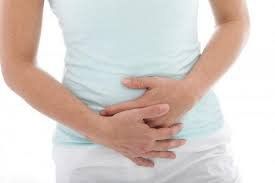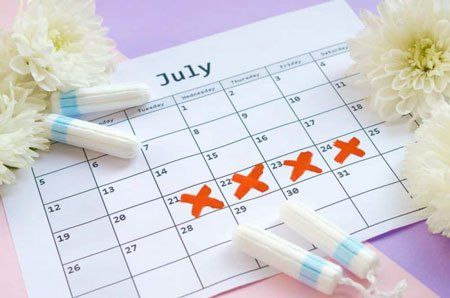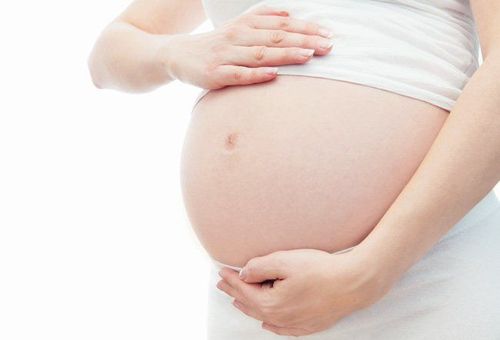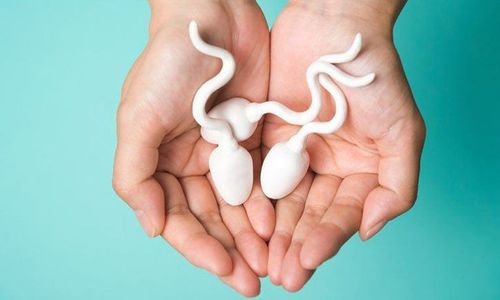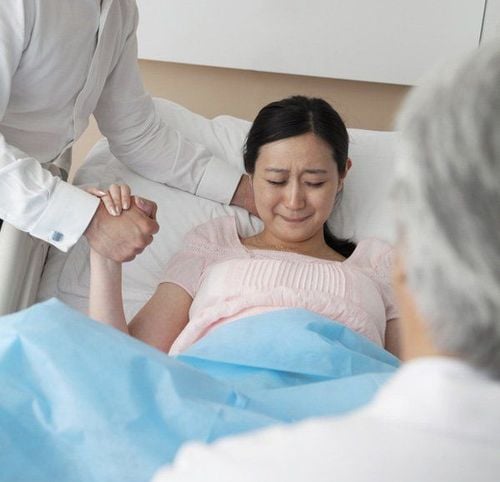This is an automatically translated article.
Menstrual cycles usually take place every month and occur in a woman's reproductive system. Medically, menstruation is the process by which a woman sheds (via the vagina) blood and other substances from the lining of the uterus at some point in the month and lasts from puberty until menopause (the cessation of menstrual cycles). regular menstruation), except during pregnancy. This process takes about 3-5 days.1. Female reproductive system
To understand the process of menstruation, it is first necessary to understand the structure and working principle of the female reproductive system. The female reproductive system is made up of the following parts:Uterus: The uterus is the place where the zygote is the nest and also the place to keep the baby during pregnancy. The lining of the uterus, also known as the endometrium, thickens every month so it can help in the event of a fertilized egg and the need for a place to implant. An amazing fact that not many people know is that before pregnancy, a woman's uterus was only the size of a small orange. However, by the end of pregnancy, they are about 5 times larger than that initial size. Ovaries: Consists of 2 small, almond-shaped organs located on either side of the uterus and are the place to store all of a woman's eggs. Each baby girl is born with about 1 to 2 million egg cells and this number will not increase throughout life. However, only about 400 oocytes will be released during a woman's childbearing years. The rest, most of the other egg cells will be reabsorbed into the body, so the average woman will have about 1,000 eggs left at menopause. Fallopian tubes: Corresponding to the two ovaries on either side of the uterus are two fallopian tubes to carry eggs after being released to the uterus. Cervix: The cervix is the opening of the uterus and vagina Vagina: The passageway of the uterus to the outside of the body.
Trắc nghiệm: Sự hiểu biết của bạn về kinh nguyệt
Kinh nguyệt có vai trò quan trọng đối với sức khỏe sinh sản, do đó nữ giới cần chủ động trang bị kiến thức để theo dõi và kiểm soát tình trạng sức khỏe. Bài trắc nghiệm sau đây sẽ giúp bạn hiểu hơn về chu kỳ kinh nguyệt của bản thân.2. Cycle and length of the menstrual cycle
The average length of a menstrual cycle is 28 days but in reality, a woman's menstrual cycle length can range from 23 to 32 days. All women whose lengths in this time period can be considered normal.The first day of the menstrual cycle (marked by vaginal bleeding) is considered the beginning of a period. Most women have regular periods, which means that each of their periods lasts about the same amount of time.
Some women may have varying lengths of menstrual cycles, which is also completely normal. But if a woman's menstrual cycle lasts longer than a week for many months, or if she misses her period, she should seek help from a reproductive health professional.
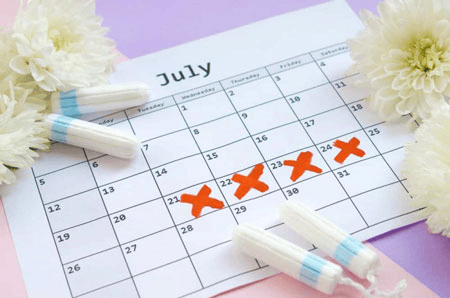
Độ dài chu kỳ kinh nguyệt của người phụ nữ có thể dao động trong khoảng từ 23 đến 32 ngày
3. The phases of the menstrual cycle in women
A woman's menstrual cycle can be divided into several phases, including: Menstruation, follicular phase, ovulation, and luteal phase. Here are all the activities that occur during each phase:3.1 Menstrual phase (menstrual phase) This phase lasts from day 1 to day 5 of the menstrual cycle. When a woman has her period, estrogen and progesterone levels drop. Menstrual bleeding will last from 3 to 7 days.
3.2 Follicular phase The follicular phase lasts from day 1 to day 13 of the menstrual cycle. The first day of your period also marks the beginning of this period. During the follicular phase, the body prepares for pregnancy.
Thanks to the hormone GnRH , the levels of the hormone FSH gradually increase and promote egg "ripening", usually 15 to 20 egg cells. Each egg cell is encased in a small sac called a follicle. Among the follicles, one will grow faster than all the others until it reaches 18 to 25 mm in diameter. The dominant follicle is the one that will be released during this menstrual cycle. If the body develops 2 dominant and released follicles, the woman is more likely to have twins.
In a 28 day cycle, the follicular phase usually lasts until the 13th day and varies depending on the length of a woman's cycle.
FSH hormone also stimulates the ovaries to produce the hormone estrogen, which affects the reproductive system at this stage. The hormone estrogen stimulates cells in the endometrium to grow, causing the lining of the uterus to thicken and become more spongy. The blood vessels also increase circulation, bringing blood to nourish the mucosal layer. All of these changes are intended to support pregnancy.
If you are not pregnant, this lining will shed during the menstrual cycle. The hormone estrogen also increases cervical mucus to help sperm easily penetrate and carry out the fertilization process.
3.3 Ovulation Phase Ovulation is the stage in which an egg is released from the ovary, which usually occurs on the 14th day of the menstrual cycle. The increase in estrogen levels causes LH hormone levels to increase as well. About 36 hours after LH levels rise, the follicles burst, releasing an egg into the fallopian tube. There the egg meets the sperm and begins the fertilization process.
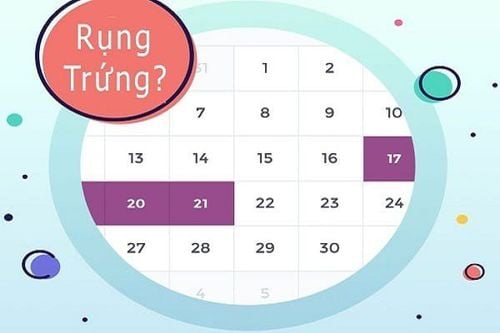
Rụng trứng là giai đoạn mà trứng được phóng thích từ buồng trứng, thường xảy ra ở ngày thứ 14 trong chu kỳ kinh nguyệt
3.4 Luteal Phase The luteal phase begins after ovulation, usually on the 15th day. During this phase, the levels of the hormone FSH and the hormone LH drop. The period of high chance of conceiving has passed and the body is making progress for each new cycle next month.
In the ovary, the empty follicle collapses and becomes a small yellow mass of cells, called the corpus luteum or corpus luteum. The corpus luteum produces progesterone which causes a woman's cervical mucus to become thicker and stickier.
In the event that sperm cells are found in the fallopian tubes, the lining of the fallopian tubes will secrete special substances that nourish the fertilized egg. After a week, the zygote will attach to the lining of the uterus to implant, that's when the woman is officially pregnant. Within a week after that, the woman will also receive a positive pregnancy test with a pregnancy test. After that, pregnancy symptoms will appear and become more and more obvious such as breast engorgement (due to increased estrogen and progesterone levels).
If the egg is not fertilized or fertilized but cannot survive, it will enter the degenerative stage. During the last days of the cycle, if a woman is not pregnant, both estrogen and progesterone levels drop, causing the blood vessels in the lining of the uterus to constrict. Without a blood supply and nutrients, the lining of the uterus begins to shed, the lining of the uterus breaks down causing the uterine muscles to contract, causing menstrual cramps. Eventually, the blood vessels in the mucosa break open, and the blood from the mucosal tissues is excreted through the vagina. Then a new cycle begins.
Except during pregnancy, this cycle will continue, one after another until the woman enters menopause.

Ngoại trừ lúc mang thai, chu kỳ kinh nguyệt sẽ liên tục, nối tiếp nhau cho đến khi người phụ nữ bước vào thời kỳ mãn kinh
If a woman is planning to become pregnant, in addition to carefully learning about the ovulation process to make a rational decision to have sex. But both husband and wife need to check the fertility situation 3-5 months before getting pregnant to make sure the health of the couple is completely good to prepare for a healthy pregnancy.
The wife should:
Get vaccinated before pregnancy (especially against rubella because rubella in pregnancy is extremely dangerous ) Genetic testing to screen for genetic diseases before pregnancy Check for secondary infections In particular, women over 35 years of age, if they want to become pregnant (especially if they have never been pregnant), will have to have a very detailed health check because pregnancy at this age often problems: Ovarian failure, premature birth, higher risk of birth defects, placenta previa, preeclampsia. The husband should:
Check reproductive health, detect diseases of testicular atrophy, physiological weakness, weak sperm... Sexually transmitted diseases, especially those that cannot be cured, are extremely dangerous. Vinmec currently has many comprehensive health care programs for couples, pregnant mothers and their unborn babies, including basic pre-marital examination packages, advanced pre-marital examination packages, and maternity packages. . Vinmec has a team of experienced doctors in the fields of obstetrics and gynecology, IVF, stem cells, gene technology, capable of synchronously and comprehensively deploying the most advanced assisted reproductive techniques today.
For specific information about fertility and maternity packages at Vinmec, please contact the hospitals and clinics of Vinmec health system nationwide.
Please dial HOTLINE for more information or register for an appointment HERE. Download MyVinmec app to make appointments faster and to manage your bookings easily.
SEE MOREHow to calculate ovulation for women with irregular menstrual cycles 5 things you may not know about your menstrual cycle How does sparse menstruation affect reproductive health?




